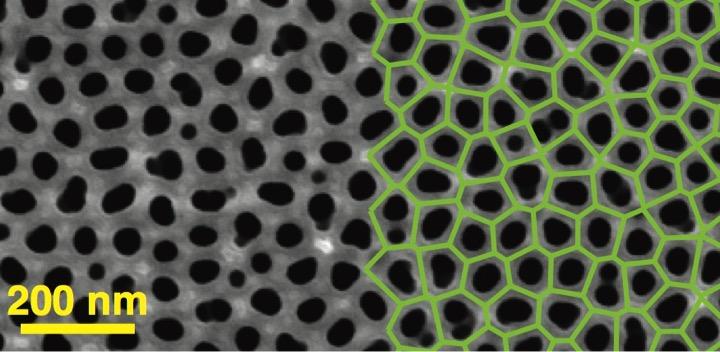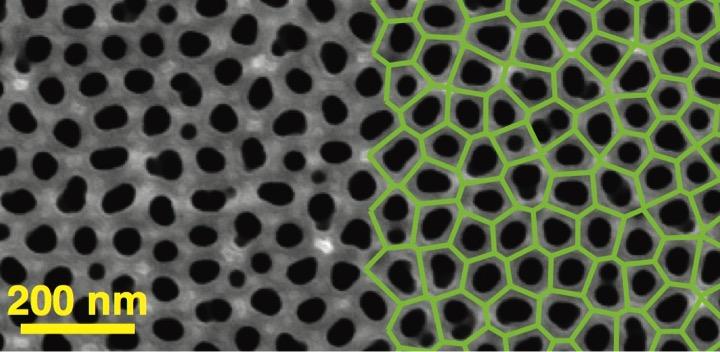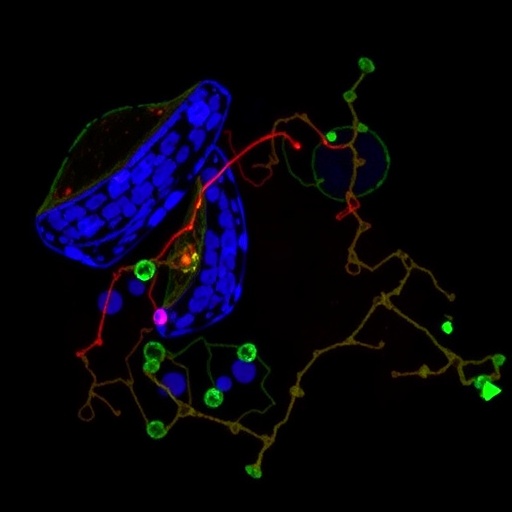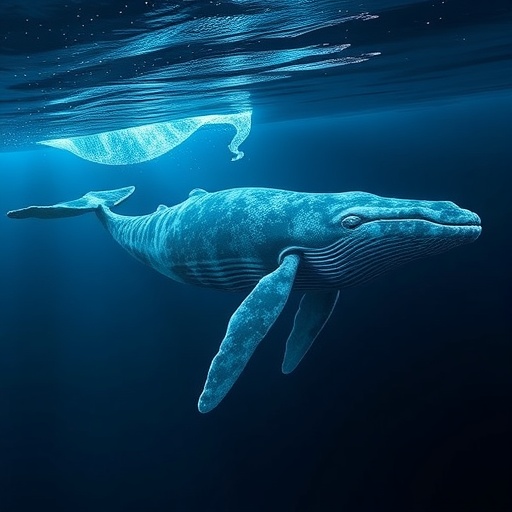
Credit: Valles Lab / Brown University
PROVIDENCE, R.I. [Brown University] — Researchers from Brown University have demonstrated an unusual method of putting the brakes on superconductivity, the ability of a material to conduct an electrical current with zero resistance.
The research shows that weak magnetic fields — far weaker than those that normally interrupt superconductivity — can interact with defects in a material to create a "random gauge field," a kind of quantum obstacle course that generates resistance for superconducting electrons.
"We're disrupting superconductivity in a way that people haven't done before," said Jim Valles, a professor of physics at Brown who directed the work. "This kind of phase transition involving a random gauge field had been predicted theoretically, but this is the first time it has been demonstrated in an experiment."
The research is published in the journal Scientific Reports.
The superconducting state depends on the formation and propagation of "Cooper pairs," coupled electrons that, at very low temperatures, behave more like waves than particles. Their wavelike property enables them to travel across the structure of a material without banging into atomic nuclei along way, reducing the resistance they encounter to zero. Cooper pairs are named for Leon Cooper, a Brown University physicist who shared the 1972 Nobel Prize in physics for explaining their behavior.
The bonds between paired electrons are not particularly strong. A small increase in temperature or the presence of a magnetic field with a strength above a critical value (the value varies a bit for different materials) can break the pairs apart, which in turn breaks the superconducting state.
But Valles and his colleagues were investigating a different method of destroying superconductivity. Instead of breaking the Cooper pairs apart, Valles's team wanted to see if they could disrupt the way in which the pairs propagate.
When a material is superconducting, Cooper pairs propagate "in phase," meaning the peaks and troughs of their quantum waves are correlated. Knocking the waves out of phase would render them unable to propagate in a way that would sustain the superconducting state, thereby converting the material to an insulator.
To demonstrate the phenomenon, Valles and his colleagues created small superconducting chips made of amorphous bismuth. The chips were made with nanoscale holes in them, arranged in a randomly repeating honeycomb-like pattern. The team then applied a weak magnetic field to the chips. Under normal circumstances, a superconductor will repel any magnetic field below a critical value and go right on superconducting. But the defects in the bismuth caused the material to repel the magnetic field in a peculiar way, forming tiny vortices of electrical current surrounding each hole.
To superconducting Cooper pairs, those vortices form a quantum obstacle course too difficult to cross. The current vortices push and pull on the wave fronts of passing Cooper pairs in random patterns, knocking the waves out of phase with each other.
"We're disrupting the coherent motion of the wave fronts," Valles said. "As a result the Cooper pairs become localized — unable to propagate — and the system goes from superconducting to insulating."
The research may help scientists understand the fundamental properties of superconducting materials — in particular, how defects in those materials could interrupt superconductivity in certain situations. Understanding how these materials behave will be important as their use increases in applications like quantum computers, which will rely on consistent superconducting states.
"In technology, we're trying to eke more and more out of the quantum properties of materials, but those materials all have these messy impurities in them," Valles said. "We've shown the effects of a certain kind of quantum randomness in a superconductor that is driven by a magnetic field and random defects. So this work may be interesting for understanding what limitations there are in exploiting the quantum properties of materials."
Valles is hopeful that the findings and the technique described in the paper will lead to other fundamental advances.
"We can tune this phase shifter in a well-defined way that's straightforward to model, which can allow us to understand quantum phase transitions a little bit better," Valles said. "So in a sense, we've created a new knob we can twist to affect the properties of these materials and see how they react."
###
The work was led by Hung Nguyen, a former graduate student at Brown, and Shawna Hollen of the University of New Hampshire. Additional co-authors were Jeffrey Shainline (National Institute of Standards and Technology) and Jimmy Xu (Brown). The work was supported by the National Science Foundation (DMR-1307290, DMR-0907357), the Air Force Office of Scientific Research and the Asian Office of Aerospace Research and Development.
Media Contact
Kevin Stacey
[email protected]
401-863-3766
@brownuniversity
http://www.brown.edu/Administration/News_Bureau
############
Story Source: Materials provided by Scienmag





